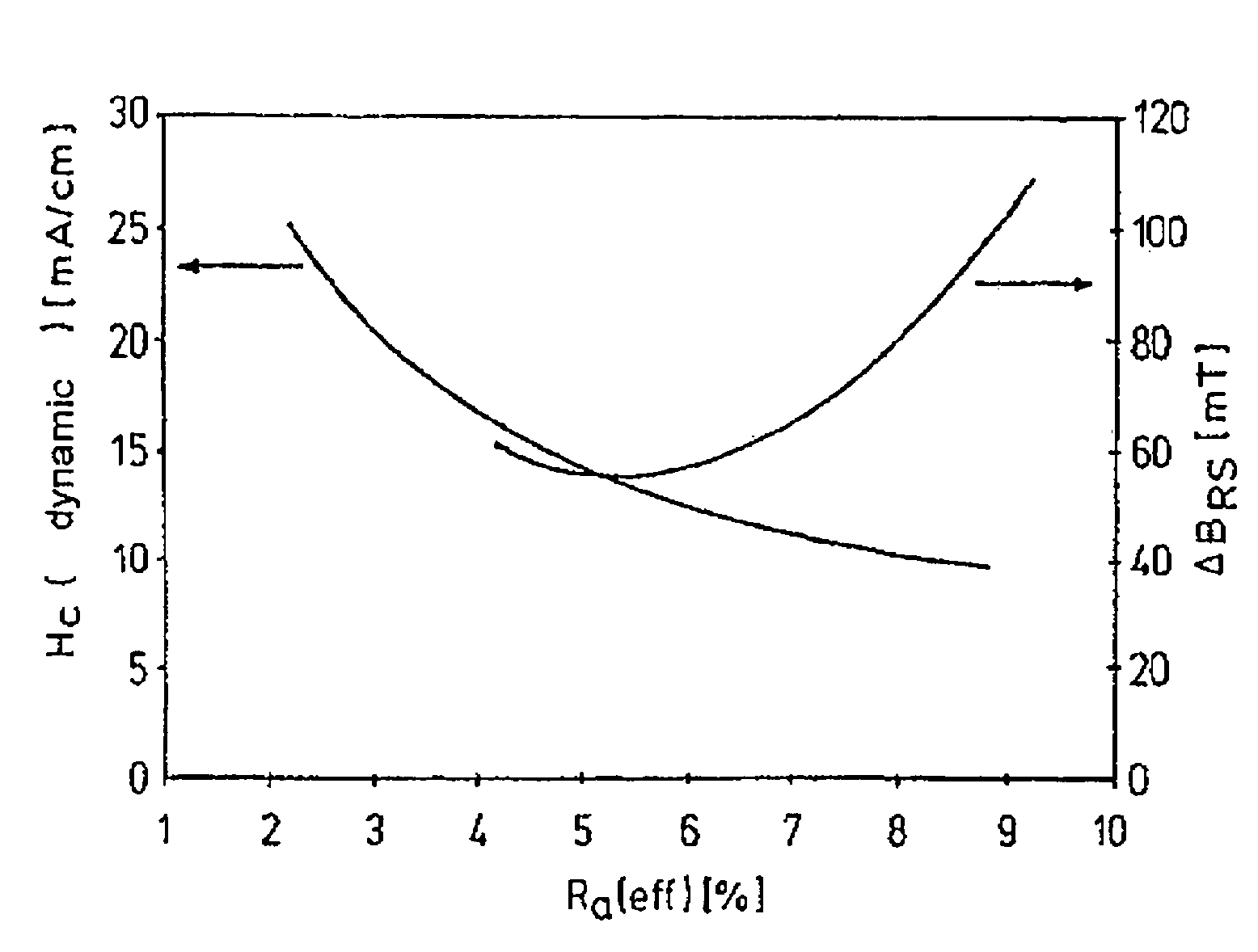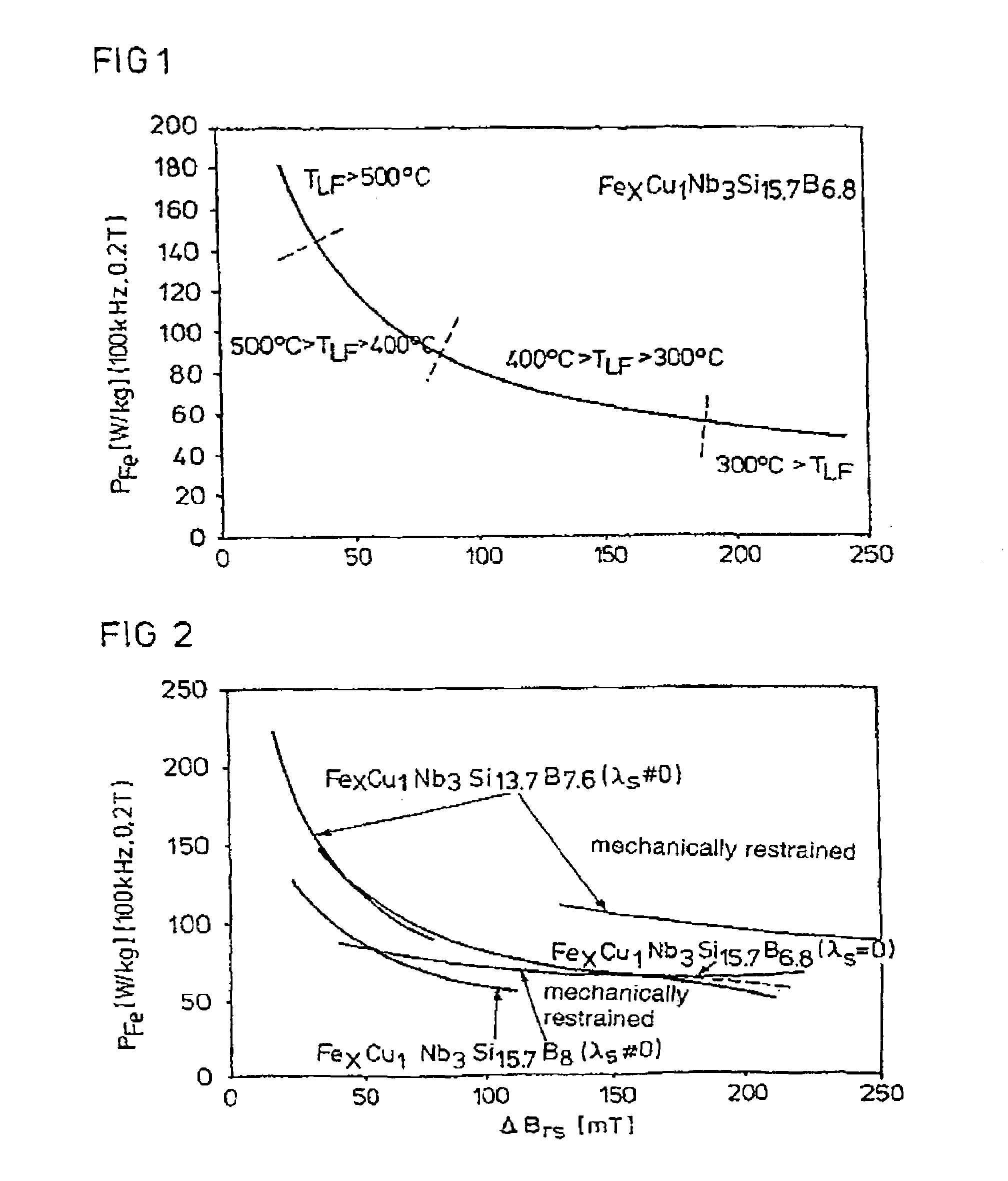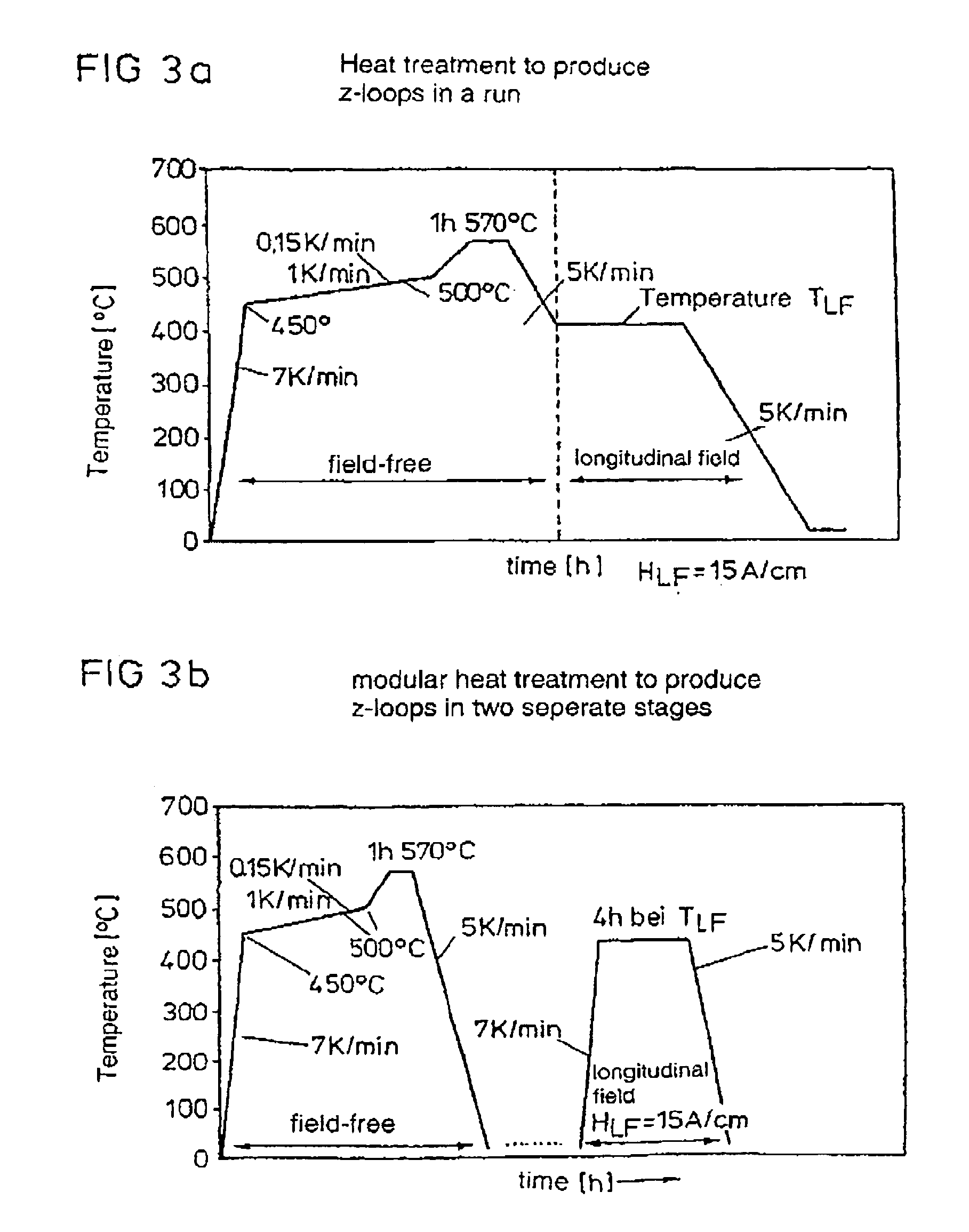Magnetic amplifier choke (magamp choke) with a magnetic core, use of magnetic amplifiers and method for producing softmagnetic cores for magnetic amplifiers
a technology of magnetic amplifier and choke, which is applied in the direction of core/yokes, electromagnets, magnetic materials, etc., can solve the problems of only achieving the volume of components, reducing the volume of transducer cores, and reducing the loss of magnetic reversal
- Summary
- Abstract
- Description
- Claims
- Application Information
AI Technical Summary
Benefits of technology
Problems solved by technology
Method used
Image
Examples
first embodiment
[0074]Particularly excellent physical results were obtained using a magnetic core, which was wound tension-free, with the dimensions 30×20×10 mm3 from the alloy Fe73.42Cu0.99Nb2.98Si15.76B6.85, whereby the effective roughness Ra (eff) of the band's surface was 4.5%. The mean band thickness was 20.7 μm.
[0075]FIGS. 4a and 4b show the temperature / time profile of the deployed heat treatments. The magnetic cores were initially heated to a temperature of approximately 450° C. using a heating rate of 7 K / min. No magnetic field had been set up. The heating rate was subsequently delayed to approximately 0.15 K / min in order to avoid an undefined overheating of the magnetic core due to an exothermal heat development during the nanocrystallization process, which begins at that point. It was heated up to a temperature of approximately 500° C. using this relatively low heating rate of 0.15 K / min. Using a heating rate of 1 K / min it was heated to a final temperature plateau of 565° C.
[0076]The magn...
second embodiment
[0081]A magnetic core consisting of the same alloy compound and the same dimensions as in the first embodiment, and which was wound tension-free was used. However, a reduced longitudinal field temperature of approximately 315° C. was used to lower the cyclic magnetization losses Pfe for a shorter time of 2 hours. This heat treatment is shown in FIG. 5a. FIG. 5b shows the same heat treatment in modular form the main features of which were discussed in the first embodiment.
[0082]The cyclic magnetization losses Pfe, which resulted from a dwell time that had been reduced to 2 hours, and a lowered longitudinal field temperature of approximately 315° C. were only at 62 watt / kg at this point. The dynamic residual excursion ΔBRS, however, was increased to 137 mT. The transductor regulator's dead time, which is related thereto, was excessive thereafter, which is why the output voltage of 3.3 volt power supply unit output collapsed under a load of 10 watts while the 5 volt output, which was d...
third embodiment
[0083]The use of power barrier diodes including an increased recovery current during the transition into the locked direction enabled a well-defined increase of the coercive field strength of transductor regulators. A magnetic core consisting of the identical alloy compound as in the first embodiment and having the same dimensions was tempered to the maximum longitudinal anisotropy KU using a single phase heat treatment at a temperature of approximately 575° C. in a magnetic longitudinal field with a strength of HLF=30 A / cm. Thus, a very small residual excursion ΔBRS=25 mT was obtained, whereas the cyclic magnetization losses Pfe increased up to 160 watt / kg at 50 kHz / 0.4 T. To reduce the modulation while maintaining the tension / time area, the transductor core had to be enlarged to a dimension of 30×20×17 mm3 due to the excessive cyclic magnetization losses. The heat treatment which was applied is depicted in FIG. 6. However, independent of the recovery effect, such transductor types...
PUM
| Property | Measurement | Unit |
|---|---|---|
| frequency | aaaaa | aaaaa |
| temperature | aaaaa | aaaaa |
| temperature | aaaaa | aaaaa |
Abstract
Description
Claims
Application Information
 Login to View More
Login to View More - R&D
- Intellectual Property
- Life Sciences
- Materials
- Tech Scout
- Unparalleled Data Quality
- Higher Quality Content
- 60% Fewer Hallucinations
Browse by: Latest US Patents, China's latest patents, Technical Efficacy Thesaurus, Application Domain, Technology Topic, Popular Technical Reports.
© 2025 PatSnap. All rights reserved.Legal|Privacy policy|Modern Slavery Act Transparency Statement|Sitemap|About US| Contact US: help@patsnap.com



